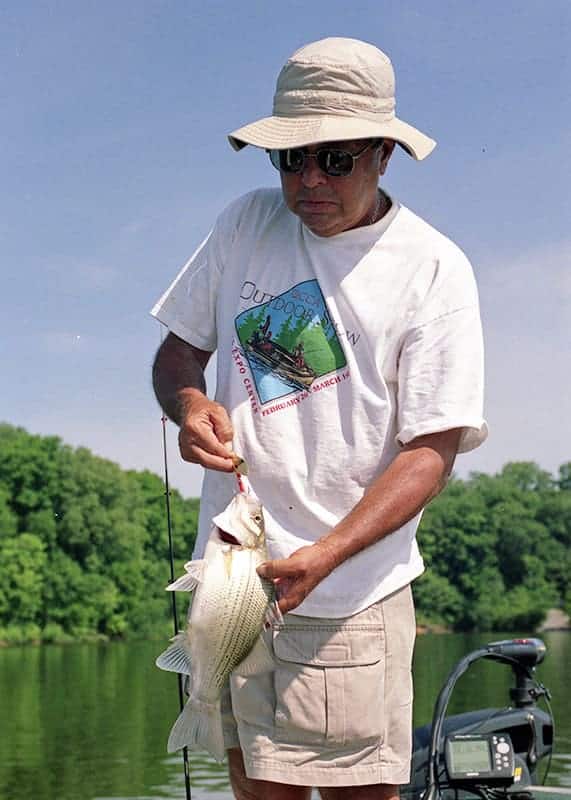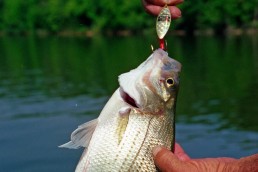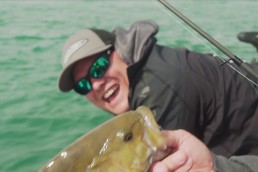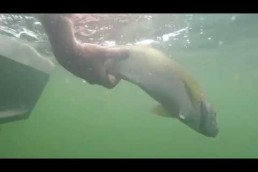White Bass Ways of an Old Wizard
SHARE THIS POST
Those elusive and mysterious white bass on are on the comeback. Fishing for “stripes” has been poor or nonexistent for the past few years, but Lake Barkley fishermen and guides are reporting decent catches this year. A lot of the fish are small, but they are more abundant than many have seen in a long time.
One of the lake’s white bass wizards is old Malcolm Lane. Malcolm grew up here on the Land Between the Lakes (LBL) before the big lakes were even made, playing around in the hollows and ditches that are now lake structure. He knew the lay of the lake (land) before it was a man-made reservoir, and he has been a professional fishing guide here for over three decades.
This intimate knowledge of the underwater land and his lifelong love of white bass fishing make him an ultimate authority in my book.
Lane put up with me for a few hours the other day to show me how he’s cashing in on the white bass comeback, and I figured a few of you would like to know about it.
The stripes he’s catching right now are 15 to 20 feet deep in ditches and dips near the main river channel. What he looks for is a hump or a ridge running next to the channel. But he’s not fishing the main channel side or the hump itself; he’s casting into the deep water on the other side of the hump or ridge. There are a lot of places like this out in the main lake, but only a few of them hold roaming schools of white bass.

Current is the key, and Lane knows which dips and hollows receive just the right outflow from the inundated, but still moving Cumberland River path. These are the little side pockets that concentrate swarms of minnows, and, consequently, schools of marauding white bass.
For a fee, Malcolm or his son, Lynn, will show you where they lay. Just call Hook, Line and Sinker or you can troll around with a sharp eye on your depth
finder and prospect on your own.
A lot of people troll all manner of crankbaits and spinners for white bass, but Malcolm likes to cast for them—I like that, too. He uses a number 2 or 3 Aglia Long in-line spinner. His favorites have a yellow and red shaft, and he chooses either a gold blade when it’s overcast or a silver blade when it’s bright. However, when the fish are near the dark Barkley bottom at 20 feet, I suspect a gold blade is best regardless of cloud cover.
Are you enjoying this post?
You can be among the first to get the latest info on where to go, what to use and how to use it!
Malcolm tries to cast these heavy, treble-hooked flashers over relatively bare sections. White bass are open-water roamers that don’t relate to stumps and brush and such, and by keeping the trebles clear of the clutter, he doesn’t get hung up much.
He lets them sink all the way to the bottom, and then rips them for a few cranks. Watch the line carefully as it falls; sometimes a fish will hit it just before it reaches the bottom. But that’s usually a big, old catfish. It’s important to yank the rod tip and start reeling the second the bait touches down.
The white bass strike usually comes within the first two or three turns. If one of them doesn’t try to rip the rod from his hand within six cranks or so, Malcolm stops and lets the bait sink to the bottom again.
This isn’t the only way to fish for deep-roaming whites. As I mentioned, you can troll or jig spoons straight up and down. But casting is a lot of fun, and for their size, white bass give one of the most spirited fights in freshwater.
Later, hopefully, we’ll get some decent jumps—but that’s another story.
Ron Kruger has been communicating the outdoor experience for over four decades. He has worked as a full-time guide for trout on the North Fork, for crappies and bass on Kentucky Lake and for smallmouths on the Current River. He has served as editor of three outdoor magazines, and owns a patent on a fly/lure called the Desperate Diver.
MWO
SHARE THIS POST
Did you enjoy this post?
You can be among the first to get the latest info on where to go, what to use and how to use it!
Ron Kruger
Ron Kruger has been communicating the outdoor experience for more than four decades. He has worked as a full-time guide for trout on the North Fork, for crappies and bass on Kentucky Lake and for smallmouths on the Current River. He has served as editor of three outdoor magazines, and owns a patent on a fly/lure called the Desperate Diver.



